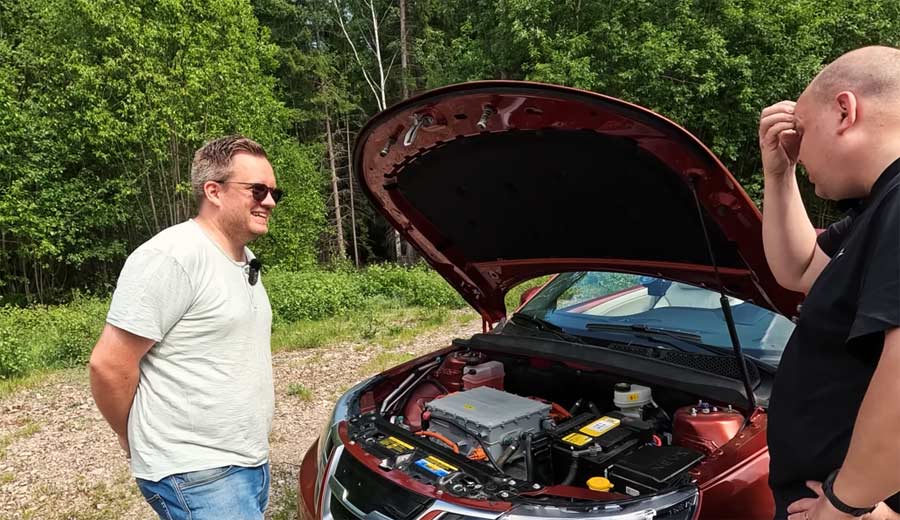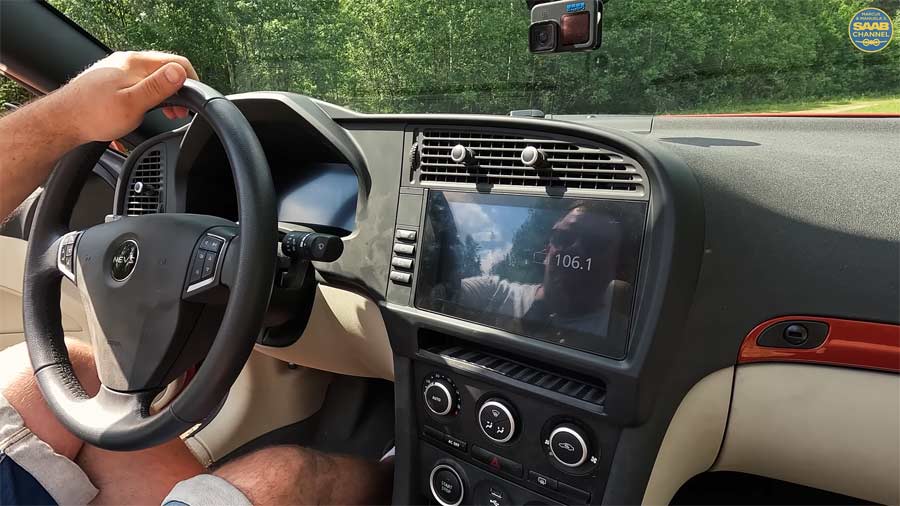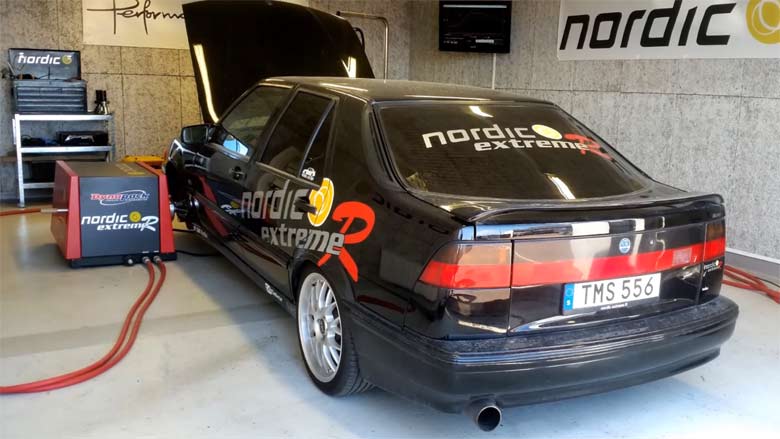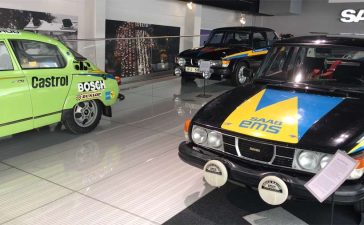At this year’s Saab Car Festival in Trollhättan, an extraordinary vehicle caught everyone’s attention. At first glance, it appeared to be a Saab 9-3 Convertible, but a closer look revealed a different story. The car, known as the WiMa 442 EV, is a unique project tied to Saab but built from parts of numerous other vehicles, making it a true “automotive Frankenstein“.
Before the festival, Marcus Wigh from “Vetlanda Bil & Skadecenter“, the mastermind behind this project, was interviewed by Marcus from the YouTube channel “Marcus & Manuela’s Saab Channel,” who created a video showcasing this fascinating and unique project:
Watch the video here
Table of Contents
A Modern Marvel: Building the WiMa 442 EV
The WiMa 442 EV stands as a testament to innovation and dedication. This electric convertible was constructed using a variety of parts, many of which originate from different Saab models and other vehicles. Marcus Wigh, the creator, runs Vetlanda Bil & Skadecenter and collaborates with Marcus from “Marcus & Manuela’s Saab Channel” to bring this project to life. The car’s creation involved intricate modifications, such as converting a right-hand drive body to accommodate an electric vehicle (EV) battery, making it a remarkable feat of engineering.

Wigh began with a brand-new 2012 Saab 9-3 body that had never seen the road, which he discovered at the old Saab factory in Trollhättan. He then combined it with the chassis, drivetrain, and bottom plate of a Nevs 9-3 EV that never went into production. This blend of components created a vehicle that looks like a Saab 9-3 Convertible but functions as a modern electric car.
Challenges and Triumphs
One of the significant challenges in building the WiMa 442 EV was ensuring that the car remained drivable and comfortable. Despite the extensive modifications, the vehicle maintains a pleasant driving experience. Marcus Wigh feared the car might become too stiff or uncomfortable, but it turned out to be a delight to drive.
Moreover, the WiMa 442 EV is registered as a 2024 model, making it one of the newest Saabs, albeit an unofficial one. This unique registration further adds to the car’s mystique and appeal among Saab enthusiasts.
A Legacy of Innovation
This project is not the first time Saab enthusiasts have created custom electric vehicles. The Saab community has a rich history of innovation and dedication to preserving and advancing the brand’s legacy. For instance, the NEVS 9-3 EV, which never made it to mass production, served as a crucial component for the WiMa 442 EV.
These custom projects often involve repurposing and upgrading old Saab models with modern electric drivetrains, showcasing the community’s commitment to combining classic design with contemporary technology. The WiMa 442 EV is a perfect example of this spirit, representing both a tribute to Saab’s heritage and a step forward into the future of automotive engineering.

In-Depth Look: The Components and Assembly
The transformation of the WiMa 442 EV required extensive work. The car’s body had to be significantly modified to fit the EV battery, which included raising the ground clearance and reworking the entire floor. The process took just four months, highlighting Marcus Wigh’s skill and dedication.
The WiMa 442 EV’s interior features a blend of original Saab components and custom modifications. For example, the seats were taken from a Volvo XC60 and modified to fit the raised floor. The dashboard was custom-made, incorporating elements from various Saab and NEVS models. This mix of parts and the custom modifications create a unique and cohesive look that still feels authentically Saab.
The Festival Showcase
The Saab Car Festival in Trollhättan provided the perfect stage for unveiling the WiMa 442 EV. The festival, known for its gathering of unique and rare Saabs, saw thousands of attendees marveling at Marcus Wigh’s creation. The car stood out not only because of its electric drivetrain but also because of its status as a completely new model built from scratch.
Marcus Wigh’s presentation at the festival included a detailed explanation of the car’s build process, challenges faced, and the satisfaction of creating a one-of-a-kind vehicle. His efforts were met with admiration and curiosity from fellow Saab enthusiasts and automotive experts alike.
A Glimpse into the Future: Custom Saabs and Electric Vehicles
The WiMa 442 EV sets a precedent for future custom Saab projects. It demonstrates that with enough passion, creativity, and technical know-how, enthusiasts can continue to innovate and keep the Saab spirit alive. This project also highlights the potential for electric conversions in classic cars, offering a sustainable path forward for automotive preservation.
One of the standout features of the WiMa 442 EV is its seamless integration of modern electric vehicle technology into a classic Saab body. This integration is not only functional but also aesthetically pleasing, showcasing the potential for future projects to follow a similar path.
Conclusion: A Tribute to Saab’s Legacy
The WiMa 442 EV is more than just a car; it is a symbol of the enduring legacy of Saab and the dedication of its community. By blending the old with the new, Marcus Wigh has created a vehicle that not only pays homage to Saab’s innovative history but also points towards a future where classic cars can be reimagined with modern technology.
For more insights into this incredible project and to see the WiMa 442 EV in action, watch the full interview and showcase on YouTube in another video:
This electric convertible might not be a traditional Saab, but it embodies the pioneering spirit that has always defined the brand. The WiMa 442 EV is a beautiful testament to what could have been and what can still be achieved by passionate enthusiasts around the world.












There’s something not quite with the glovebox
What headunit is that!!!
Saab never made their own drivetrains.
I would swap it with the 2.8 V6
I’d happily swap out my ttid engine for electric right now! Only had it running for about 4 weeks this year and had 3 issues in just the last week! 🤬
Saab never made their own drivetrains.